Aglaonema simplex
Scientific name: Aglaonema simplex
Family: Araceae
Maximum size reached under cultivation: 20 - 40 cm (7.87 - 15.75 inch)
014
Recommended pH range: 6 - 8
Recommended water hardness: 4 - 12°dGH (71.43 - 214.29ppm)
0°C 32°F30°C 86°F
Recommended temperature range: 22 - 28 °C (71.6 - 82.4°F)
Preferred propagation method: Rhizome
Native to: Southeast Asia
Growth rate: Slow
Recommended substrate: Sand
Lighting requirements: Medium
Ideal placement in tank: Foreground
🏞️ Ideal Planting Area
Aglaonema simplex is best suited for moist foreground or midground zones of paludariums, ripariums, and other semi-aquatic environments. While it is sometimes used in aquariums, this species is not a true aquatic plant and should never be kept fully submerged for extended periods, as this can cause rhizome rot and decline. With its modest height of 20–40 cm (7.87–15.75 inches), it adds depth and vertical texture without overshadowing nearby plants. For best results, keep the roots moist while allowing the foliage to remain above water. Provide moderate lighting and avoid shading from taller species.
🌱 Propagation Methods
Propagating Aglaonema simplex is easy and is primarily done through rhizome division. When planting, avoid burying the rhizome completely—this increases the risk of rot. Instead, place the rhizome on top of the substrate and lightly cover it with sand or fine gravel. Over time, the rhizome will develop new shoots. To propagate, gently split the rhizome into sections, making sure each has healthy roots and a few leaves. These divisions can then be placed in paludariums or shallow setups, where they will establish and grow gradually.
🧑🌾 Difficulty Level
Aglaonema simplex is a low-maintenance plant, ideal for beginners and advanced aquarists alike. It performs best in humid, semi-aquatic setups such as paludariums, ripariums, and pond edges. Although sometimes introduced into aquariums, long-term full submersion is not advised. This species tolerates a broad pH range (6–8), prefers moderate lighting, and benefits from occasional liquid fertilization. It is slow-growing but resilient, requiring only occasional trimming of older or damaged leaves.
🌿 Short Description
Also known as the Malayan Sword, Aglaonema simplex is native to Southeast Asia, including Malaysia, the Philippines, and Borneo. It is not an aquatic plant and should never be fully submerged. Instead, it thrives in paludariums, ripariums, and moist marginal zones where its roots stay wet and the foliage grows above the waterline. This species is appreciated for its broad green leaves, which bring a lush, tropical appearance to semi-aquatic layouts. Due to its slow growth and preference for sandy, well-drained substrates, it requires minimal maintenance once established.
❓ FAQ
- Can I grow Aglaonema simplex in a fully submerged aquarium?
- 🚫 No. This species is not a true aquatic plant. Prolonged submersion can lead to rhizome rot and plant decline. It's better suited for paludariums, ripariums, or pond edges.
- How tall does this plant grow?
- 📏 It typically reaches a height of 20–40 cm (7.87–15.75 inches), making it ideal for foreground or midground zones in semi-aquatic layouts.
- What substrate is best for planting?
- ⛏️ Use fine gravel or sand. Ensure the rhizome is placed above the substrate and only the roots are buried to avoid rotting.
- Can it grow in low light?
- 💡 It prefers moderate lighting. While it can tolerate some shade, growth may become slower and the foliage less vibrant in low-light conditions.
- Is this plant suitable for beginners?
- ✅ Yes. Aglaonema simplex is a low-maintenance species that thrives with minimal care in the right environment.

 Aglaonema commutatum “Silver Queen”
Aglaonema commutatum “Silver Queen”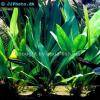 Anubias afzelii
Anubias afzelii Anubias barteri
Anubias barteri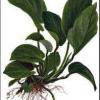 Anubias barteri “Caladiifolia” ‘1705’
Anubias barteri “Caladiifolia” ‘1705’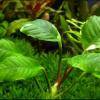 Anubias barteri “Coffeefolia”
Anubias barteri “Coffeefolia”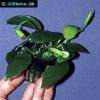 Anubias barteri “Nana”
Anubias barteri “Nana”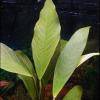 Anubias barteri v. angustifolia
Anubias barteri v. angustifolia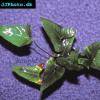 Anubias gracilis
Anubias gracilis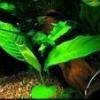 Anubias heterophylla
Anubias heterophylla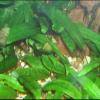 Cryptocoryne affinis
Cryptocoryne affinis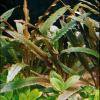 Cryptocoryne albida
Cryptocoryne albida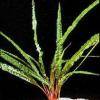 Cryptocoryne balansae
Cryptocoryne balansae Cryptocoryne becketti
Cryptocoryne becketti Cryptocoryne blassi
Cryptocoryne blassi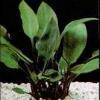 Cryptocoryne ciliata
Cryptocoryne ciliata Cryptocoryne cordata
Cryptocoryne cordata Cryptocoryne lutea
Cryptocoryne lutea Cryptocoryne nevillii
Cryptocoryne nevillii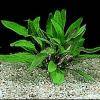 Cryptocoryne petchii
Cryptocoryne petchii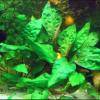 Cryptocoryne pontederiifolia
Cryptocoryne pontederiifolia Cryptocoryne wendtii
Cryptocoryne wendtii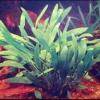 Cryptocoryne willisii
Cryptocoryne willisii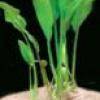 Lagenandra ovata
Lagenandra ovata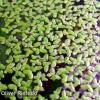 Lemna minor
Lemna minor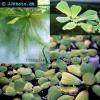 Pistia stratiotes
Pistia stratiotes Spathiphyllum petite
Spathiphyllum petite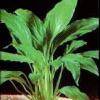 Spathiphyllum wallisii
Spathiphyllum wallisii